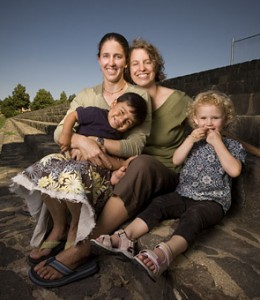
According to MSNBC.com, a new poll conducted by the Pew Center suggests that highly visible gay families may be changing the way Americans view and accept alternative family structures. The nationally representative survey polled 2,961 Americans – and overall results revealed participants to be more supportive of two-parent gay and lesbian families than they are of single mothers.
The study revealed a three-way split in the way Americans view a-traditional families – one which prompted researches to dub the resultant groups Acceptors, Rejectors and Skeptics. The “Acceptor” group includes people who are widely accepting of different family structures, while the “Rejectors” believe that alternative arrangements have a negative impact on society. Meanwhile, the “Skeptics” group showed mixed reactions on the subject, approving of some arrangements and disapproving of others.
Most Acceptors and Skeptics support stable gay and lesbian families without question; however, when it comes to families headed by single mothers, the Skeptic pool becomes divided. According to the study, 98% of Acceptors think there’s nothing wrong with single-mother childrearing. But 99% of Skeptics and 98% of Rejectors think single mother families are bad for society.
Neither commentators nor Pew Center researchers seem surprised at the results of the new study. When it comes down to statistics, there is a slight but evident decline in success rates for kids raised in single-parent homes versus those raised in two-parent homes. However, most experts doubt that this is the main reason behind the study results.
Louisiana State University assistant sociology and human ecology professor Katherine Stamps Mitchell believes that many Americans still harbor misconceptions about single moms. On the other hand, University of Virginia psychology professor Charlotte Patterson notes that increased exposure to gay and lesbian neighbors, work colleagues and government officials, as well as a growing portrayal of gay families in popular media culture, may have combined to shift attitudes and sneak the notion of gay and lesbian families into the mainstream.











